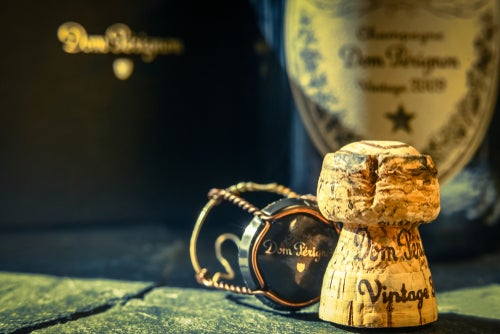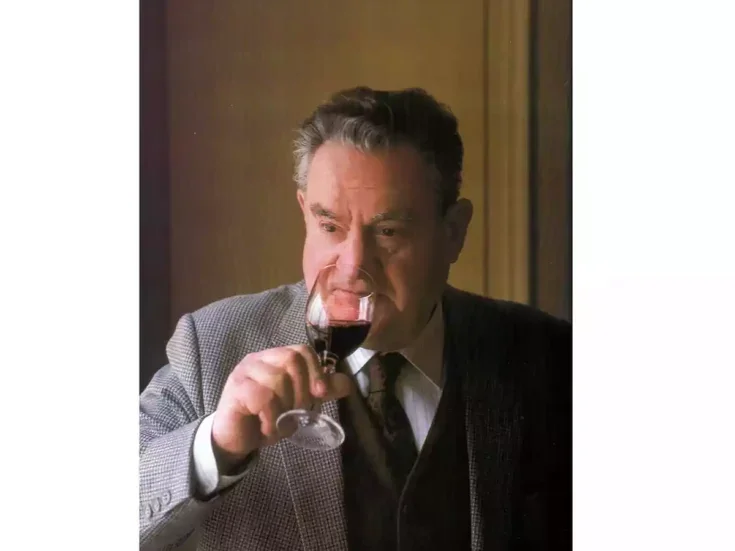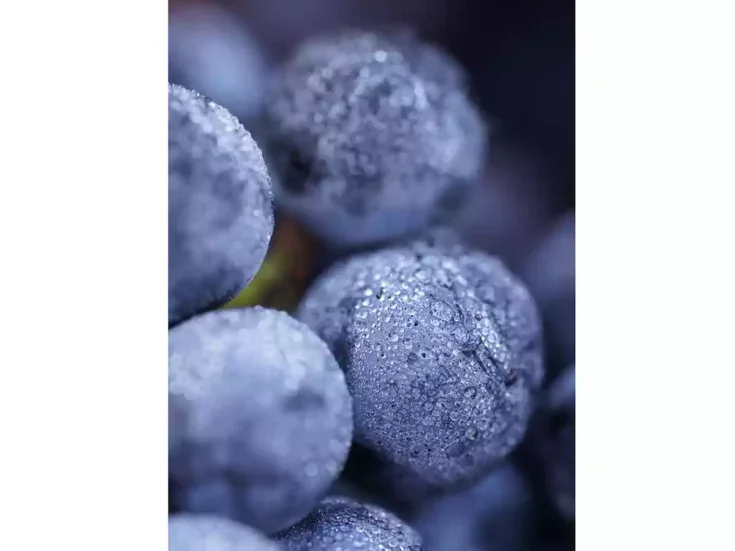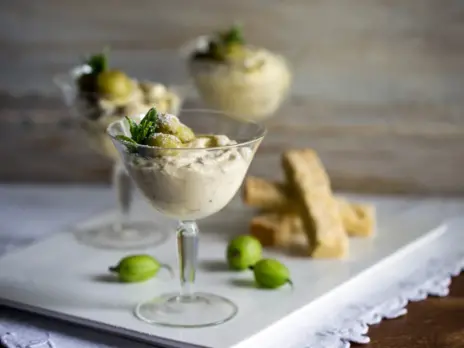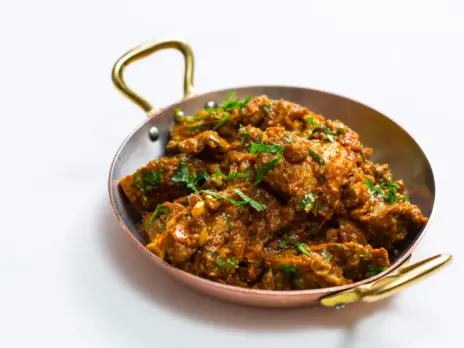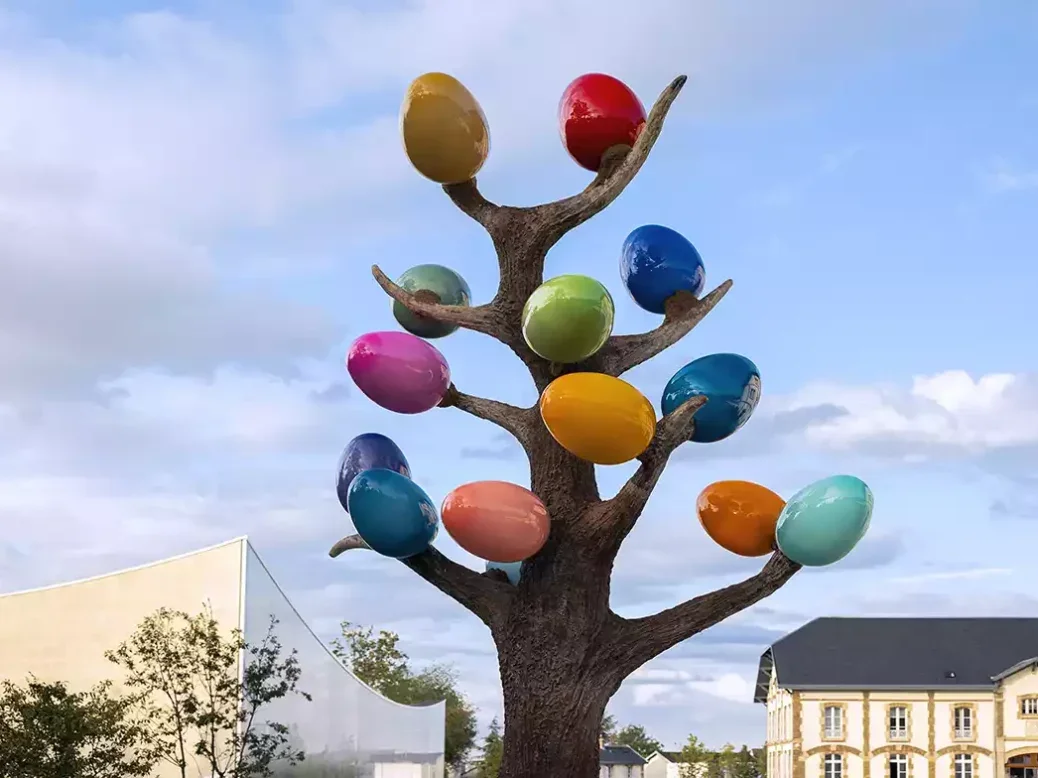
There is a bit of perhaps unintentional humor in the substantial art collection at 4 Rue des Crayères, a revamped property of Ruinart in Reims. You approach the entrance via the Chemin des Crayères, a passage through high walls of hacked-out chalk just like the chalk in the crayère cellars beneath your feet—except that it isn’t. It’s concrete, painted white. And you think, The one thing they’re not short of around here is chalk; what is going on?
Chalk would, I suppose, gently dissolve in the rain—another thing they’re not short of here, especially in 2024. But this is the only spot in the new building to use concrete, they say proudly; mindful of their carbon footprint, the Nicolas Ruinart Pavilion—where you go to buy handsome kitchen knives with handles made from Chardonnay wood, and rather beautiful crockery, and yes, bottles of Ruinart—is made from stone and glass, with shading on the glass that is reminiscent of 2024’s low rain clouds and presumably prevents the building from being dazzling on a bright day.
There are sculptures everywhere: in the garden, pretending to be trees, or a snail, or sap rising in an LED light show. Everything is related to wine—growing, making, or aging. In the cellars, up to 125ft (38m) deep—as deep as these repurposed quarries get in Champagne, and equal to 80 million years of chalk deposits—there are more: theatrical, startling, clever, imposing, often beautiful. The artists include Eva Jospin, Pascale Marthine Tayou, Dewar & Gicquel, Tomoko Sauvage, Jeppe Hein, Côme Di Meglio, Tomàs Saraceno, Lui Bolin, and Jaume Plensa. Sou Fujomoto designed the pavilion. The works are all intriguing—and there’s one you can play with, maybe, if you ask nicely. (Or just say, “I want a go, I want a go.” It worked for me.) You drop a ball in at the top and it bounces along, dislodges other balls, runs around, disappears, reappears… It’s supposed to explain the process of making Champagne, and it’s great fun.
Some of the bottles of Ruinart available in the pavilion, and available nowhere else, are its new Dégorgement Tardif wines: 2004, 2005, 2006, and 2007, all disgorged in February 2024. The 2006 was the only wine offered for tasting. They are the successors to the La Réserve Oenothèque wines; and that Ruinart has stocks available for late release is itself relatively new. Until the 1980s, says chef de cave Frédéric Panaïotis, any unsold bottles from a vintage release were used up at parties. The first vintage kept back officially for late release in the future was 1998. And 1998 was also the year when Ruinart and Panaïotis got more data on crown caps versus corks that made them experiment and then change their minds on the best way to age Ruinart before disgorgement.
Those new data told them that crown caps—the impermeable kind—allowed in 0.5mg of oxygen every year. Cork allows more at first, and then less. Yeast, which is what that oxygen interacts with in the bottle, loses energy with time, until after seven years it is pretty much worn out.
The 1998 vintage was aged partly under cork and partly under crown caps. It was ready for release in 2009, and it was clear that cork was the better option. In 2010, Ruinart switched to cork for all wines that age more than seven years before disgorgement.

The convincing case for cork
So, let’s run through what happens; and I am indebted to Panaïotis for all this information.
At tirage, you get a headspace in the bottle that contains 7g/l of oxygen; oxygen comprises about 21% of air. When you push a cork into the bottle, some of that air is pushed into the wine—about 3mg of oxygen—and of course the wine interacts with it. Some also escapes into the atmosphere.
Within 24 hours, all the oxygen in the wine has been eaten by the yeast. The yeast needs oxygen to resist alcohol. If corking is done quickly, there is no oxidation, because all the oxygen is taken up by the yeast.
The wine re-ferments, and the concentration of CO2 in the bottle is high: 11–12g/l. (That is equal to 6 bars of pressure at 50°F [10°C].) Outside the bottle, the CO2 content of air is about 0.04%. So, there is a much higher concentration of CO2 in the bottle than outside. Since there is no absolutely perfect, impermeable seal in Champagne, CO2 therefore escapes through the cork into the atmosphere. The oxygen content of air, however, is about 21%, but there is zero oxygen in the bottle because the yeast has absorbed it all. So, CO2 escapes through the cork because of the pressure in the bottle, which is entirely comprised of CO2, and oxygen enters through the cork—and, says Panaïotis, oxygen, not air.
This of course explains why magnums keep their fizz longer than bottles—a bigger bottle but the same-sized mouth. (As an aside, below a concentration of 2g/l of CO2 there will be no bubbles.) From 2024, says Panaïotis, Ruinart will also bottle Jéroboams of Vintage, for the same reason.
What is surprising is that, after a few months, the level of oxygen ingress under cork reduces, and the level of oxygen in the wine is flat. You’d think it would keep coming in, says Panaïotis, but it doesn’t. Under crown cap, however, there’s a linear increase. Even a tight, almost oxygen-proof cap allows in 0.5mg/l per year of oxygen. After six years, the concentration of oxygen in the wine under crown cap overtakes the concentration of oxygen under cork—and keeps rising.
This of course raises the question of how much oxygen the yeast can absorb. From Panaïotis’s figures, it looks as if, under crown cap, the yeast can absorb everything for three years and seven months. After that, although the yeast continues to gently increase its oxygen consumption, there is much more oxygen ingress than it can consume. Under cork, with less oxygen in the wine, the wine keeps its youth longer.
Panaïotis suggests that the phenolic compounds in cork also play a part: Oxygen entering through the cork may react with those phenolic compounds (Panaïotis’s graphs measure 17 of them) to balance out the amount of oxygen in the wine. And Panaïotis is talking of regular cork, not cork remade in the various ways it can be remade. He suspects that the latter might lose its mechanical properties after a while; more so than a regular cork.
Whether you like your Champagne late-disgorged, with all the youth and freshness that delivers, is a matter of taste. A vote in the tasting room revealed that all preferred the late-disgorged wine except the only Brit (me). “Typical British palate,” said Panaïotis. When he was at Veuve Clicquot, many years ago, samples of the 1988 vintage were sent to journalists in Germany, France, and Britain. The Germans said it was too old. The French liked it. The Brits said it was too young.

